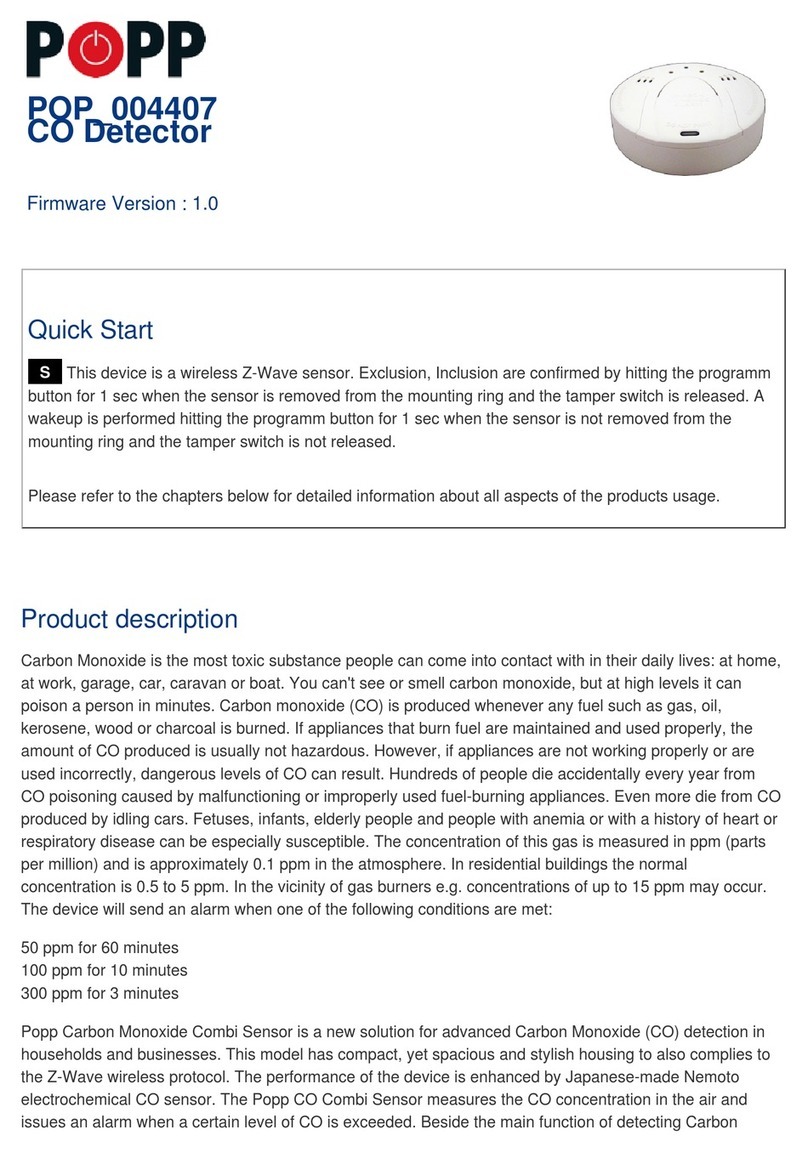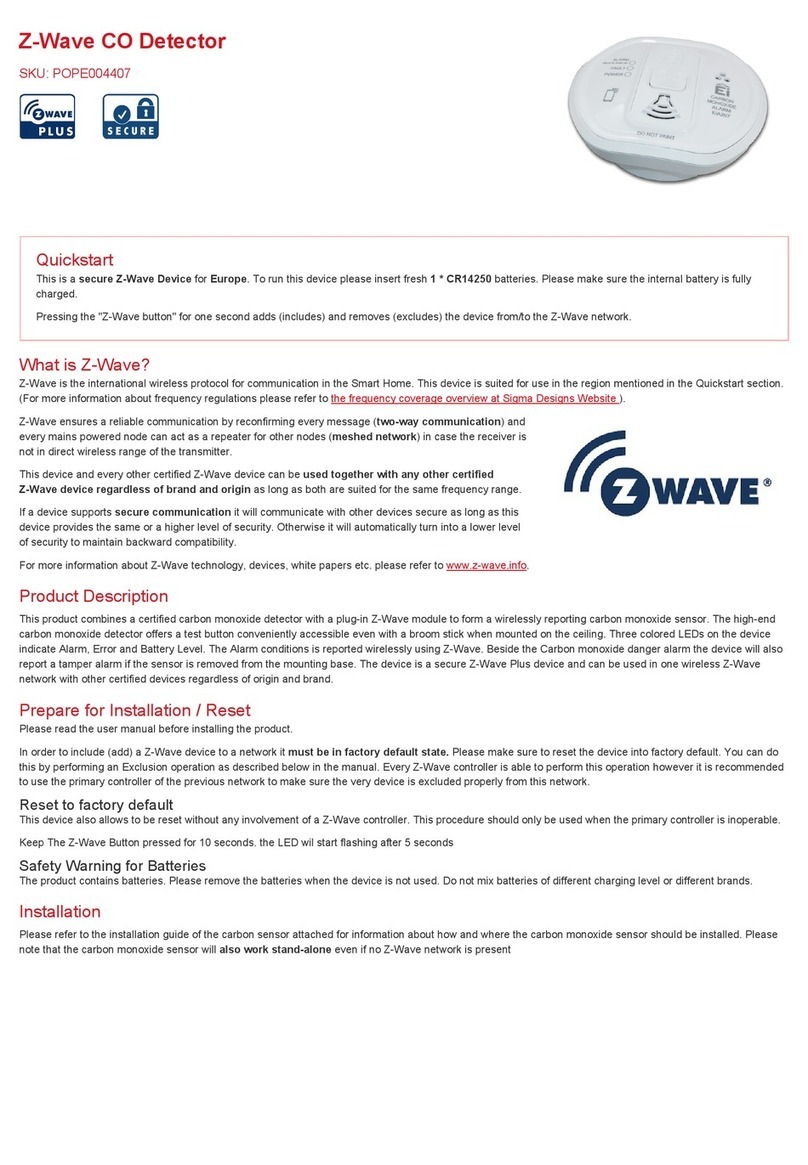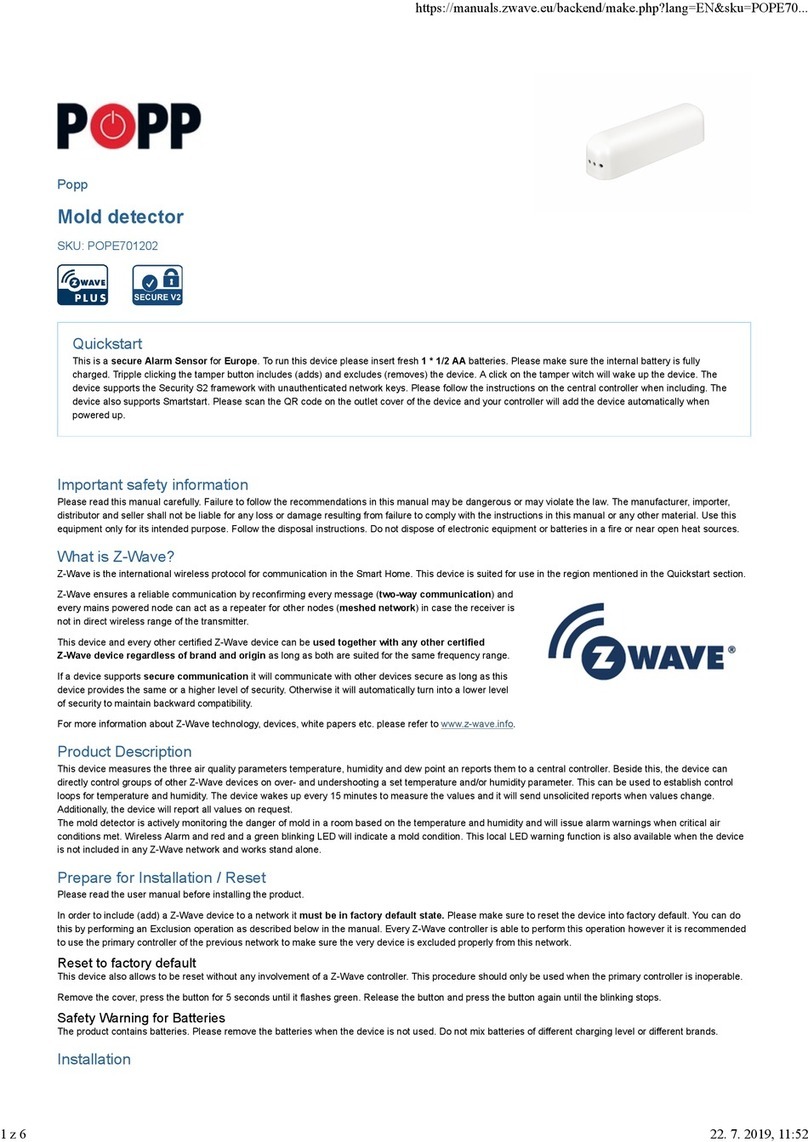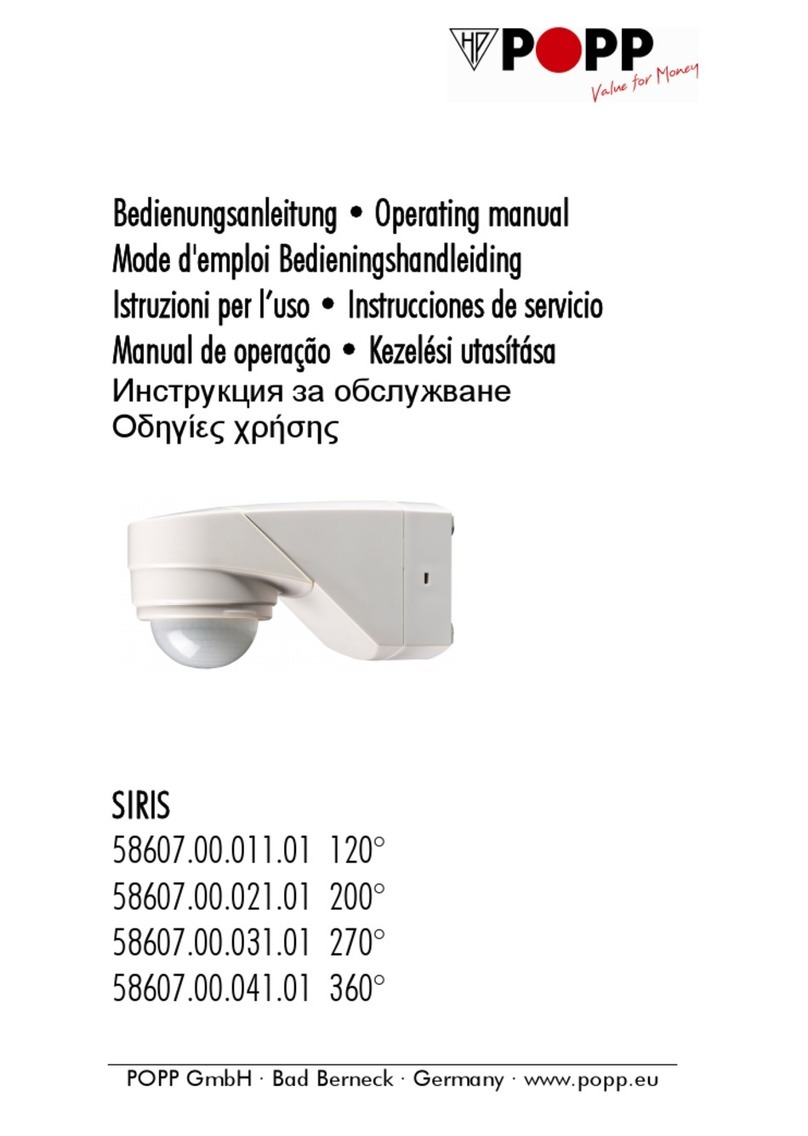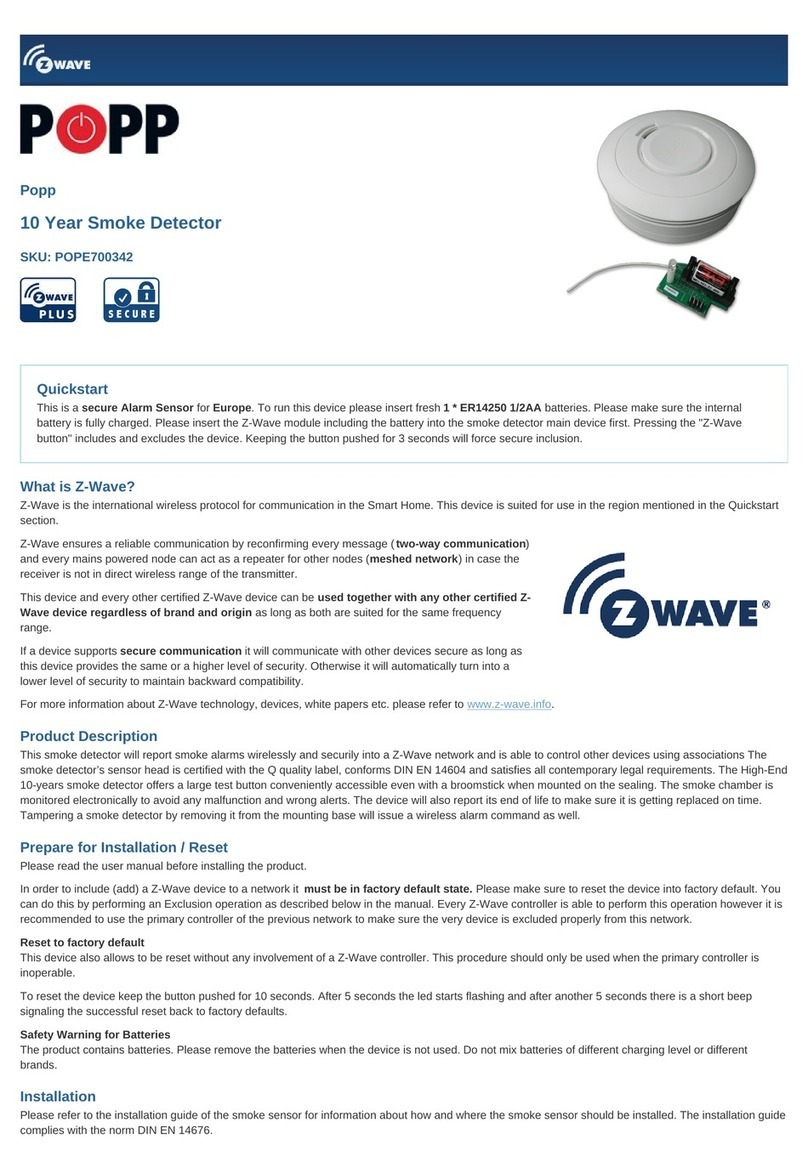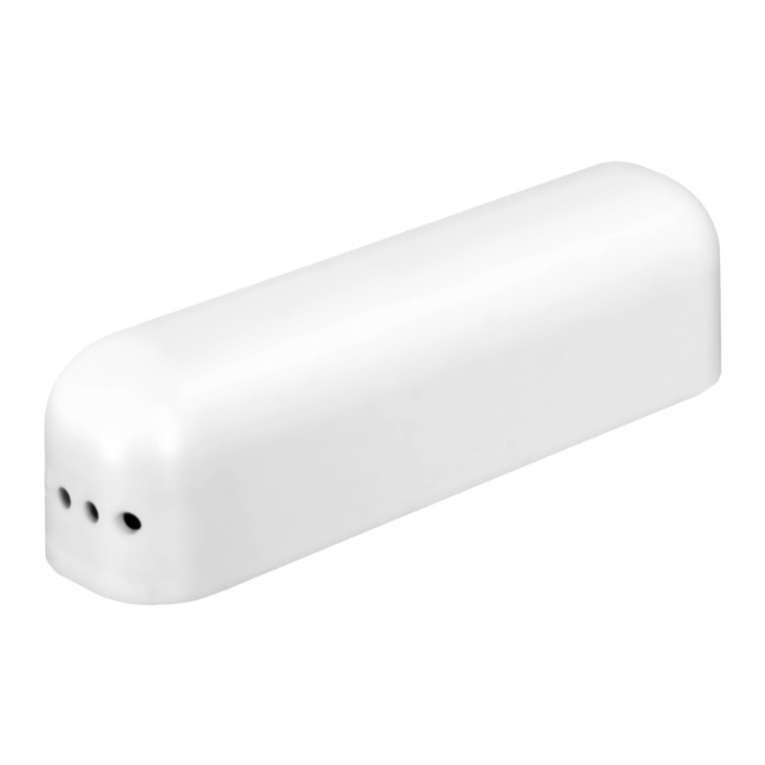store commands that can not be received during deep sleep state. Without such a controller, communication may become impossible and/or the battery life
time is significantly decreased.
This device will wakeup regularly and announce the wakeup state by sending out a so called Wakeup Notification. The controller can then empty the
mailbox. Therefore, the device needs to be configured with the desired wakeup interval and the node ID of the controller. If the device was included by a
static controller this controller will usually perform all necessary configurations. The wakeup interval is a tradeoff between maximal battery life time and the
desired responses of the device. To wakeup the device please perform the following action: A single click on the tamper button will wakeup the device.
Quick trouble shooting
Here are a few hints for network installation if things dont work as expected.
1. Make sure a device is in factory reset state before including. In doubt exclude before include.
2. If inclusion still fails, check if both devices use the same frequency.
3. Remove all dead devices from associations. Otherwise you will see severe delays.
4. Never use sleeping battery devices without a central controller.
5. Dont poll FLIRS devices.
6. Make sure to have enough mains powered device to benefit from the meshing
Association - one device controls an other device
Z-Wave devices control other Z-Wave devices. The relationship between one device controlling another device is called association. In order to control a
different device, the controlling device needs to maintain a list of devices that will receive controlling commands. These lists are called association groups
and they are always related to certain events (e.g. button pressed, sensor triggers, ...). In case the event happens all devices stored in the respective
association group will receive the same wireless command wireless command, typically a 'Basic Set' Command.
Association Groups:
Group Number Maximum Nodes Description
15 Lifeline
25 Temperature High Trigger
35 Temperature Low Trigger
45 Humidity High Trigger
55 Humidity Low Trigger
Configuration Parameters
Z-Wave products are supposed to work out of the box after inclusion, however certain configuration can adapt the function better to user needs or unlock
further enhanced features.
IMPORTANT: Controllers may only allow configuring signed values. In order to set values in the range 128 ... 255 the value sent in the application shall be
the desired value minus 256. For example: To set a parameter to 200 it may be needed to set a value of 200 minus 256 = minus 56. In case of a two byte
value the same logic applies: Values greater than 32768 may needed to be given as negative values too.
Parameter 1: Minimum Temperature change to report
This value defines the minimum change of temperature to cause an unsolicited report of humidity to the central controller using Lifeline.
If the value is set to 0, there will be no reports sent to the controller, when the temperature changes. However, periodic reports, managed by configuration
parameter 4, may still be active.
Size: 1 Byte, Default Value: 20
Setting Description
1 - 100 1/10 degree
0disabled
Parameter 2: Minimum humidity change to report
This value defines the minimum change of humidity to cause an unsolicited report of humidity to the central controller using Lifeline.
If the value is set to 0, there will be no reports sent to the controller, when the humidity changes. However, periodic reports, managed by configuration
parameter 4, may still be active.
Size: 1 Byte, Default Value: 7
Setting Description
1 - 20 %
0disabled
Parameter 4: Periodic Reports
This parameter defines the time interval to send an unsolicited report.
If the value is set to 0, there will be no periodic reports sent to the controller. However, reports on temperature/humidity changes, managed by configuration
parameters 1 and 2, may still be active.
Size: 2 Byte, Default Value: 43200
Setting Description







